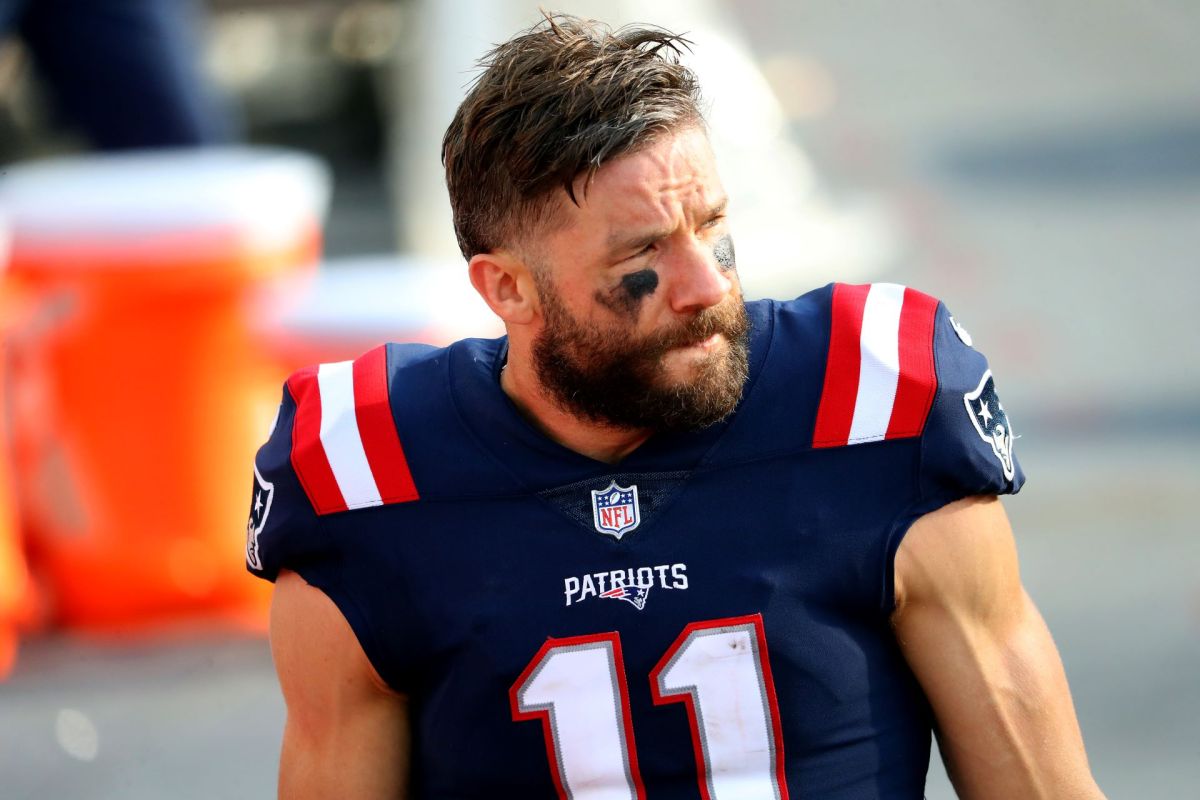There's a growing din for the National Football League to eliminate its artificial turf playing fields.
The conditions at MetLife Stadium in New Jersey caused the topic to reach a boiling point this season when four-time NFL MVP Aaron Rodgers tore his Achilles tendon on its turf field. The Sporting News recently published a deeper dive on the stadium's history of notable injuries.
While many players have been outspoken on the matter, Julian Edelman entered the chat on the podcast "No Chill with Gilbert Arenas" in June.
The former New England Patriots star, who played from 2009 to 2020, railed against the league's player safety protocols, noting one issue in particular.
"We talk about player safety, but we don't have mandatory grass, which is absolute b*******," he said. "Guys are tearing their s*** — feet, ankles, knees — non-contact all the time because of these turfs, and we haven't changed that."
Edelman, 37, said practicing on turf causes your back to lock up and your knees and ankles to be sore for three days afterward.
"With turf, there's nowhere for the energy to disperse," he said. "When you cut, everything's going straight to knee, ankle, which when you're a younger player, it's awesome because you can cheat a cut. You can cut off your inside foot and still make the cut. With grass, you'll slip. But there's no give. … There's nowhere for the energy to go but through your body."
In September, Green Bay Packers left tackle David Bakhtiari called out the league after his longtime former teammate, star quarterback Aaron Rodgers, tore his Achilles tendon on a turf field only four plays into his first season with the New York Jets.
"It's money," said Edelman, who tore his ACL on one turf field and broke his foot on another. "You put a turf field in, that's a million-five for the year. You have grass, you gotta water it, you gotta upkeep it, you gotta redo it. There's a lot of maintenance. You have to have a field crew that's always on it. There's a lot more money — really, we're counting pennies when it comes to what they're actually making — and you would think that the league would want to protect their investment in the player."
The NFL Players Association has published statistics that show players have a 28% higher rate of non-contact lower extremity injuries on turf versus grass. The NFL has released statements saying there is no difference in the rate of injuries, though it's unclear if the league is disputing the NFLPA's stat or just citing general injury rates apart from those the NFLPA specified.
"It's b*******," Edelman said.
One of the points Bakhtiari made — echoing Edelman — was that the 2026 FIFA Men's World Cup will be played on grass, even in the eight stadiums that now use turf. The world soccer governing body demands it.
Turf has also been linked to even more problematic health risks, including the brain cancer deaths of six former Major League Baseball players who spent much of their careers with the Philadelphia Phillies. The Phillies played on turf at Veterans Stadium from 1971 to 2003.
For homeowners, artificial turf seems to offer maintenance-free "green space." But in addition to its health impacts, the plastic-based product is so pesky that it can lower property values by 5%. Leaves and other debris have to be cleared from the surface, which can also trap pet odors and heat.
Grass — which comes with problems of its own, often including gas-powered maintenance — may be the lesser of two evils in a conversation with turf, but a rewilded lawn is certainly a better option for human health and the environment.
Real grass yards that are cut short get much hotter than native grasslands, and the latter are more reliable carbon sinks than even forests, according to Alabama forester and conservationist Kyle Lybarger, who founded the Native Habitat Project.
Join our free newsletter for cool news and actionable info that makes it easy to help yourself while helping the planet.









